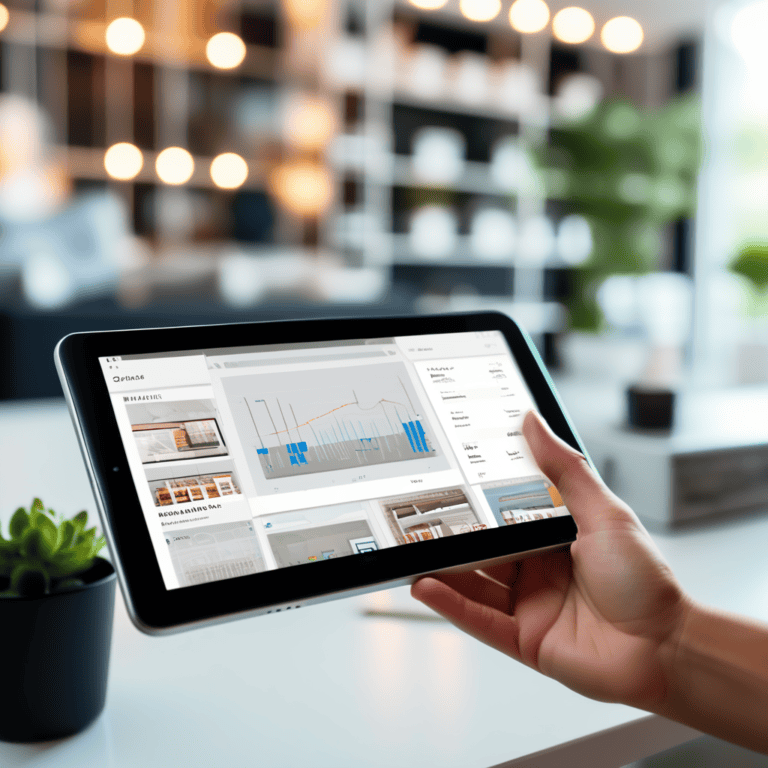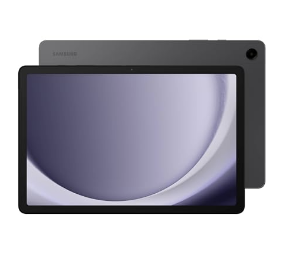The Ultimate Guide To Choosing The Right Tablets For Educational Purposes
Are you looking to equip students with the best technology for educational success? Choosing the right tablet for educational purposes is a crucial decision. With various options available in the market, it can be overwhelming to determine which tablet will best suit the needs of students and educators alike.
When selecting a tablet for educational use, factors such as purpose and usage, portability, display quality, battery life, operating system compatibility, and storage capacity play a significant role. Understanding these key considerations can help you make an informed decision that aligns with the educational objectives you aim to achieve.
In this comprehensive guide, we will delve into the essential aspects to consider when choosing a tablet for educational purposes. Whether it’s for interactive learning, digital assignments, research, or collaboration, finding the right tablet can enhance the educational experience and facilitate seamless integration of technology into the curriculum.
Stay tuned as we explore the top tablets designed to meet the demands of modern-day education, providing insights and recommendations to empower students and educators in their academic journey. Make the smart choice that fosters creativity, engagement, and productivity in the educational landscape.
Purpose and Usage
Tablets have become indispensable tools in modern education, enhancing learning experiences through their versatility and functionality. When choosing the right tablet for educational purposes, it’s crucial to consider the specific needs of students and educators alike. Let’s delve into two key aspects to help you make an informed decision.
Identifying Educational Needs
Before selecting a tablet for educational use, it’s essential to identify the specific requirements of the curriculum and the users. Consider the age group of the students, the subjects being taught, and any specialized software or apps required for educational activities. Different disciplines may demand varying features, such as stylus support for art classes or robust processing power for coding lessons. By understanding these educational needs, you can choose a tablet that aligns with the learning objectives and enhances the overall educational experience.
Versatility in Educational Settings
The versatility of a tablet in different educational settings can significantly impact its usability and effectiveness. Tablets should seamlessly transition from traditional classroom environments to remote learning setups without compromising functionality. Look for tablets that offer compatibility with a wide range of educational apps and platforms, ensuring smooth integration into various teaching methodologies. Whether used for interactive lessons, research projects, or collaborative activities, a versatile tablet enhances engagement and facilitates a dynamic learning environment.
As the educational landscape continues to evolve, selecting the right tablet for educational purposes can have a profound impact on student engagement and academic success. By considering the educational needs and versatility of tablets in different settings, educators and students can harness the power of technology to enhance learning outcomes and foster a more interactive and engaging educational experience.
 Photo by Yaroslav Shuraev
Photo by Yaroslav Shuraev
Portability and Weight
When selecting a tablet for educational purposes, considering the device’s portability and weight is crucial. Students often need to carry their tablets around campus or between classes, making a lightweight and portable option highly desirable.
Importance of Portability
Portability directly impacts the convenience and ease of use of a tablet for educational settings. A lightweight tablet can be effortlessly carried in a backpack or even a student’s hands without causing strain or fatigue. This ensures that students can comfortably transport their devices throughout the day without hindrance.
Consideration of Weight
The weight of a tablet is a key factor in determining how comfortable it is to carry and hold for extended periods. Heavier tablets can lead to discomfort and may not be practical for students who need to use them throughout the day. Opting for a lightweight tablet reduces the likelihood of physical strain and allows for greater mobility.
Finding the Right Balance
When choosing a tablet for educational purposes, striking a balance between portability and screen size is essential. While larger screens may offer better visibility for reading and studying, they often come with increased weight. It’s important to assess the trade-off between screen size and portability to find a tablet that meets both visual and practical needs.
Photo by Aleksandrs Karevs
Display Quality
When selecting a tablet for educational purposes, one of the crucial factors to consider is the display quality. The display plays a significant role in how students engage with educational content, whether it’s reading text, viewing images, or watching videos.
Resolution and Clarity
The resolution of a tablet’s display determines the clarity of images and text. Opt for a tablet with a high-resolution display, such as 1080p or higher, for crisp images and text. This ensures that educational materials are displayed with clarity, making it easier for students to read and comprehend.
Screen Size and Portability
Consider the screen size of the tablet based on the intended use. A larger screen provides a more immersive viewing experience for multimedia content, while a smaller screen offers increased portability. Choose a size that balances viewing comfort with the tablet’s portability for educational activities inside and outside the classroom.
Touchscreen Technology
The type of touchscreen technology can impact the responsiveness and accuracy of interactions with the tablet. Capacitive touchscreens are common for smooth and precise touch responses, ideal for tasks like drawing or handwriting. Ensure the tablet’s touchscreen technology is suitable for educational tasks that require precise input.
Blue Light Filters
To promote better eye health during extended tablet use, consider devices with blue light filters. Blue light filters reduce eye strain and fatigue by adjusting the screen’s color temperature to minimize exposure to blue light, which can disrupt sleep patterns and cause eye discomfort.
Enhancing the educational experience with a tablet with optimal display quality ensures that students can engage effectively with digital learning materials. Choose a tablet with the right display features to support a conducive learning environment.
Battery Life
When considering tablets for educational use, one key factor to keep in mind is battery life. The battery life of a tablet determines how long it can be used before needing to be recharged. This is crucial for students who need devices that can last throughout a school day without interruption.
Importance of Battery Life
A tablet with a long battery life ensures that students can stay focused on their learning tasks without worrying about running out of power. It allows for uninterrupted use during classes, study sessions, or while working on homework assignments. A reliable battery life is essential for a seamless educational experience.
Factors Affecting Battery Life
Several factors can impact the battery life of a tablet. The screen size and brightness level, the intensity of use (such as running multiple apps simultaneously), and the age of the device’s battery can all play a role in determining how long a tablet can operate on a single charge. It’s essential to choose a tablet with an optimized battery performance to support educational activities effectively.
 Photo by Nataliya Vaitkevich
Photo by Nataliya Vaitkevich
Operating System and Software Compatibility
When selecting a tablet for educational purposes, one crucial aspect to consider is the compatibility of the operating system with educational software. Most tablets operate on either iOS, Android, or Windows operating systems, each with its unique features and software offerings.
iOS Compatibility
iOS, the operating system designed by Apple, is known for its user-friendly interface and extensive range of educational apps available on the App Store. iPads running on iOS offer seamless integration with popular educational tools like Google Classroom, Khan Academy, and educational games designed to enhance learning experiences.
Android Compatibility
Android tablets provide a customizable and flexible platform for educational use. With access to the Google Play Store, students can explore a vast array of educational apps, interactive textbooks, and productivity tools suitable for various learning styles. Android tablets are often a cost-effective option for schools looking to implement technology in the classroom.
Windows Compatibility
Tablets running on Windows operating system offer compatibility with Microsoft Office suite and other productivity software commonly used in educational settings. Windows tablets provide a familiar interface for students accustomed to using desktop computers, making the transition to a tablet smoother. The versatility of Windows tablets allows for multitasking and running full desktop software, expanding the possibilities for educational applications.
When choosing a tablet for educational purposes, it’s essential to consider the compatibility of the operating system with the required software for a seamless learning experience.
 Photo by energepic.com
Photo by energepic.com
Storage Capacity
When choosing the right tablet for educational purposes, considering the storage capacity is crucial. Storage capacity determines how much data, apps, and files your tablet can hold. Let’s delve into the key factors related to storage capacity:
Internal Storage
The internal storage of a tablet is where all your applications, photos, videos, and other data are stored. Tablets usually come with different storage options, such as 32GB, 64GB, 128GB, or more. Consider how you plan to use the tablet. For educational purposes, a larger internal storage capacity may be beneficial if you anticipate storing a lot of educational apps, textbooks, and multimedia content.
Expandable Storage
Some tablets offer expandable storage options through microSD cards. This feature allows you to increase the storage capacity of your tablet by adding a memory card. It can be a cost-effective way to expand storage without having to purchase a higher-priced tablet with more internal storage.
Cloud Storage Integration
Cloud storage services like Google Drive, Dropbox, or iCloud provide an additional way to store your files securely. Tablets that seamlessly integrate with cloud storage platforms offer the flexibility to access your documents from anywhere with an internet connection. This is particularly useful for students who collaborate on projects or need to access their files across multiple devices.
Considering the storage capacity of a tablet ensures that you have enough space to accommodate your educational needs without compromising performance or usability. By balancing internal storage, expandable storage options, and cloud storage integration, you can optimize your tablet for a productive and efficient learning experience.

Durability and Build Quality
When selecting a tablet for educational purposes, durability and build quality are paramount considerations. A sturdy device can withstand the rigors of daily use in classrooms or study environments, ensuring longevity and reducing the risk of damage.
Robust Design for Longevity
Opt for tablets with robust designs that feature reinforced corners and durable materials. These components help protect the device from accidental drops or bumps, common occurrences in educational settings. Look for tablets with high-quality construction that can endure frequent handling without compromising performance.
Water and Dust Resistance
Tablets designed with water and dust resistance capabilities are ideal for educational use. These features shield the device from spills, splashes, or dust particles, enhancing longevity and reliability. Consider tablets with an IP-rated certification for water and dust resistance to safeguard against potential liquid or debris damage.
Impact-Resistant Displays
An essential aspect of durability is the tablet’s display. Choose devices equipped with impact-resistant screens that can withstand minor impacts and scratches. This ensures uninterrupted learning experiences even in the face of accidental mishandling or rough usage.
Rugged Cases for Extra Protection
For added durability, consider investing in rugged cases specifically designed for educational tablets. These protective covers offer an additional layer of defense against drops, shocks, and everyday wear and tear. Rugged cases can prolong the lifespan of the tablet and safeguard it during daily educational activities.
Photo by 찬희 윤
Security Features
When selecting tablets for educational purposes, one crucial aspect to consider is the security features they offer. Security is paramount in ensuring the safety of students’ data and online activities. Let’s dive into the key security features to look for in educational tablets.
1. Biometric Authentication
Incorporating biometric authentication, such as fingerprint sensors or facial recognition, enhances the security of the tablet by ensuring that only authorized users can access it. This feature adds an extra layer of protection against unauthorized access.
2. Secure Browsing Options
Educational tablets should provide secure browsing options to safeguard students from accessing inappropriate content or malicious websites. Look for tablets that offer built-in web filters and safe browsing modes to create a secure online environment for students.
3. Encryption Capabilities
Choosing a tablet with encryption capabilities is essential for protecting sensitive data stored on the device. Encryption technology scrambles data, making it unreadable to unauthorized users. This feature is crucial for safeguarding personal information and educational resources.
4. Regular Software Updates
Regular software updates are vital for addressing security vulnerabilities and keeping the tablet’s operating system and apps secure. Tablets that receive prompt security patches and updates help prevent potential cyber threats and ensure a safer learning environment.
5. App Permissions Control
Opt for tablets that allow granular control over app permissions. This feature enables administrators to manage which apps can access sensitive data or device features, enhancing overall security and privacy for students using the tablet.
Emphasizing these security features in educational tablets can help schools and institutions protect student privacy, maintain data integrity, and create a secure digital learning environment. By prioritizing security alongside functionality and performance, educators can confidently integrate technology into the classroom.
Photo by Pixabay
Cost Considerations
When choosing tablets for educational purposes, considering the cost is essential. Here are some factors to keep in mind:
Budget Allocation
Determine the budget allocated for purchasing tablets. It’s crucial to find a balance between cost and quality. Consider how many tablets can be purchased within the set budget without compromising on performance and durability.
Total Cost of Ownership
Apart from the initial purchase price, factor in the total cost of ownership. This includes expenses for accessories, software licenses, warranties, and potential repairs. Calculating the long-term costs enables a more comprehensive evaluation of the tablet’s affordability.
Educational Software Compatibility
Ensure that the selected tablets are compatible with educational software and applications. Some educational programs may have specific system requirements, and opting for tablets that meet these specifications can prevent additional costs for software modifications or upgrades.
Bulk Purchase Discounts
Explore options for bulk purchases, as many retailers offer discounts for buying tablets in large quantities. Collaborating with other educational institutions or leveraging educational technology grants can also provide cost-saving opportunities when acquiring tablets for multiple users.
Refurbished or Pre-owned Tablets
Consider purchasing refurbished or pre-owned tablets from reputable vendors. These devices can offer significant cost savings while still providing reliable performance. However, verify the condition and warranty coverage before making a purchase to ensure quality and longevity.
Photo by Kampus Production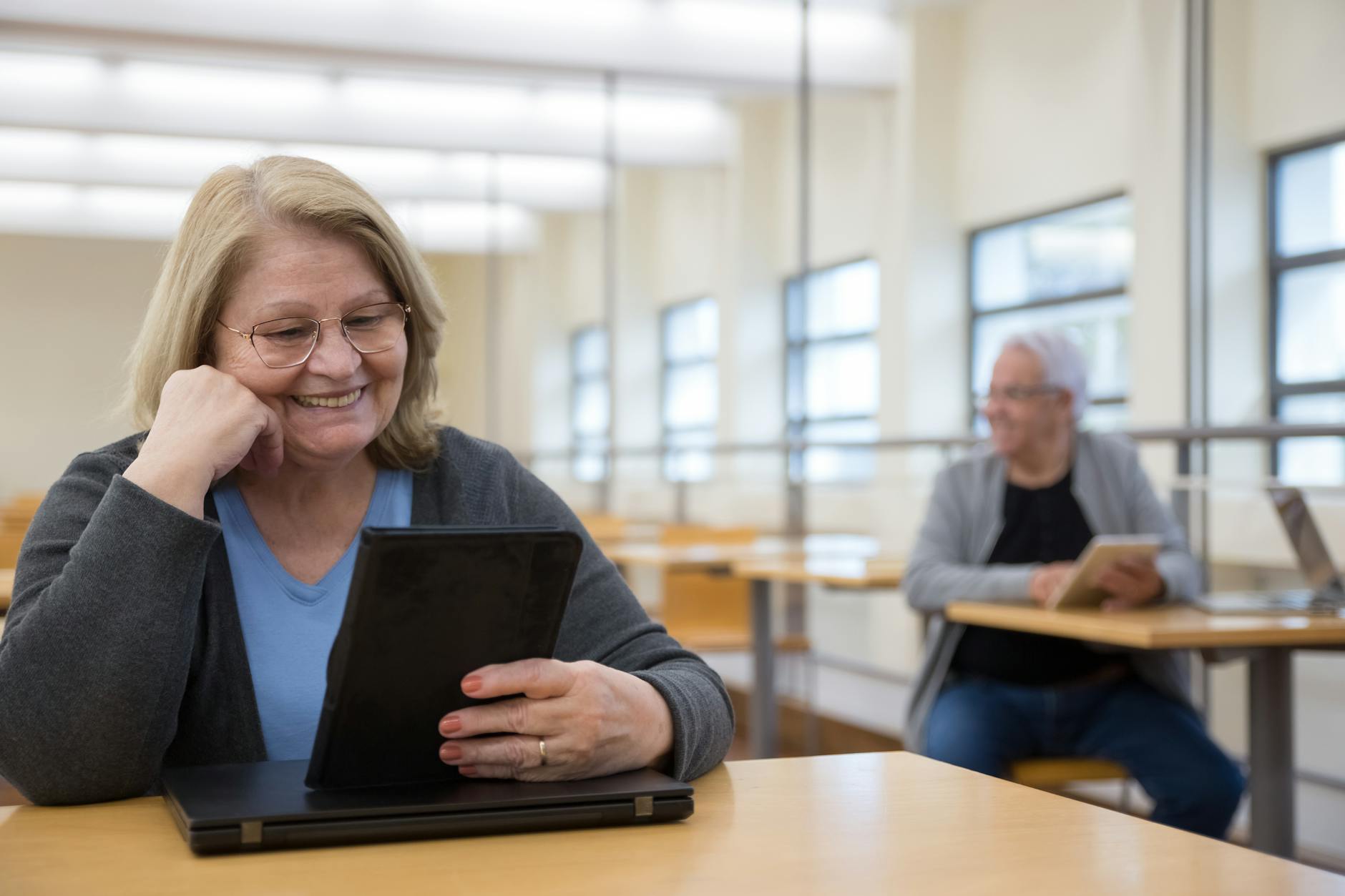
Parental Controls and Monitoring
In today’s digital age, ensuring the safety and well-being of children online is paramount. Parental controls and monitoring tools play a crucial role in empowering parents to safeguard their children’s online experiences. Let’s explore how these features can provide peace of mind while allowing children to benefit from educational resources.
Setting Boundaries with Parental Controls
Parental control settings offer a range of options to limit access to inappropriate content, manage screen time, and monitor online activities. By utilizing these tools, parents can tailor the online environment to align with their family values and protect children from encountering harmful content.
Monitoring Online Activity
Tracking online activity allows parents to understand their child’s digital behavior and address any concerns that may arise. By reviewing browsing history, app usage, and social media interactions, parents can identify potential risks and initiate conversations about internet safety.
Promoting Healthy Screen Time Habits
Effective parental controls not only restrict access but also promote healthy screen time habits. Encouraging breaks, establishing usage schedules, and fostering offline activities can help children develop a balanced relationship with technology.
Empowering Parents with Insights
Parental monitoring tools provide valuable insights into a child’s online behavior, enabling parents to intervene when necessary and guide their children towards responsible digital citizenship. By staying informed, parents can actively participate in their child’s online journey.
As technology continues to shape our daily lives, implementing parental controls and monitoring tools becomes essential in nurturing a safe and positive digital experience for children. By leveraging these features, parents can support their children’s educational endeavors while prioritizing online safety. Remember, open communication and guidance are key components in utilizing parental controls effectively.
Stay tuned for more insights on choosing the right tablets for educational purposes.
Age Appropriateness
When it comes to choosing the right tablets for educational purposes, considering the age appropriateness is crucial. Different age groups have varying needs and requirements in terms of technology usage for learning. Let’s delve into the considerations for different educational stages:
Preschool and Elementary School
For preschool and elementary school children, it’s essential to focus on interactive and engaging content. Tablets with sturdy construction and parental control features are ideal. These devices should have educational apps and games that promote early learning skills such as reading, math, and creativity. Look for tablets with colorful and intuitive interfaces to keep young learners intrigued.
Middle and High School
Students in middle and high school require tablets with more advanced features to support their academic endeavors. Opt for devices that offer productivity tools like word processing, presentation software, and note-taking apps. Consider tablets with larger screens for better readability during research and study sessions. Additionally, a durable build and long battery life are essential for sustained usage throughout the school day.
College and Higher Education
College and higher education students often need tablets that can handle complex tasks and multitasking efficiently. Look for devices with high processing power and ample storage capacity to store academic materials and projects. Tablets that support stylus input for note-taking and drawing can be beneficial for students in fields like design or architecture. Consider devices that are lightweight and portable for easy transportation between classes.
Choosing the right tablet based on age appropriateness ensures that students have access to tools that align with their educational needs and promote effective learning experiences. By selecting tablets tailored to each educational stage, you can enhance the overall academic journey for learners of all ages.
Learn more about educational technology trends
Photo by Pixabay
Additional Features to Enhance Learning
When selecting a tablet for educational purposes, considering additional features can significantly impact the learning experience. Tablets with specialized functionalities can cater to various educational needs, making the process more engaging and effective. Let’s explore some key features that can enhance the learning journey:
Stylus Support and Note-Taking Abilities
Tablets equipped with stylus support and advanced note-taking capabilities offer students a dynamic way to interact with course materials. With the ability to jot down notes directly on the screen, annotate texts, and draw diagrams, learners can actively engage with the content in a more personalized manner. This feature promotes creativity, critical thinking, and organization, essential skills for academic success.
Multimedia Capabilities for Interactive Learning
Incorporating multimedia elements into the learning process can significantly enhance comprehension and retention. Tablets with high-definition displays, vivid colors, and excellent audio quality provide an immersive learning experience. Interactive videos, simulations, and educational games can make complex concepts more accessible and engaging, fostering a deeper understanding of the subject matter.
Integration with Educational Apps and Resources
Choosing a tablet that seamlessly integrates with a wide range of educational apps and resources can enrich the learning experience. From language learning apps and digital textbooks to coding platforms and virtual labs, access to diverse educational tools can cater to different learning styles and preferences. By leveraging these resources, students can supplement classroom learning, reinforce concepts, and explore topics beyond the traditional curriculum.
Selecting a tablet with these additional features can transform the educational journey, making learning more interactive, personalized, and engaging. By considering the unique needs of students and the demands of modern education, educators and parents can empower learners to thrive in a digital learning environment.
Conclusion
Upon reaching the end of this comprehensive guide on choosing the right tablets for educational purposes, it becomes evident that selecting the most suitable device involves considering various factors. From understanding the educational goals and requirements to evaluating the technical specifications and budget constraints, the process demands careful deliberation.
Reflect on Educational Needs
To make an informed decision, educators and institutions must assess their specific educational needs. What are the learning objectives that the tablet will support? Will it primarily be used for interactive lessons, research projects, or creative tasks? By reflecting on these questions, stakeholders can align the tablet’s features with the desired learning outcomes.
Consider Technical Specifications
When choosing a tablet for educational purposes, technical specifications play a crucial role. Factors such as processing power, storage capacity, battery life, and display quality can significantly impact the device’s usability and performance in an educational setting. It is essential to strike a balance between functionality and affordability to meet the educational requirements effectively.
| Product Image | Product Name / Primary Rating / Price | Primary Button |
|---|---|---|
|
||
|
||
|
Evaluate Software Compatibility
The compatibility of educational software with the chosen tablet is paramount. Whether it’s learning apps, digital textbooks, or interactive tools, ensuring that the tablet can run the necessary software smoothly is essential for a seamless learning experience. Compatibility issues can hinder the integration of technology into teaching practices, emphasizing the importance of thorough software evaluation.
Budget Considerations
Budget considerations inevitably influence the tablet selection process for educational purposes. Balancing the affordability of the device with the required features and performance capabilities is a critical aspect of decision-making. By setting a clear budget and prioritizing essential functionalities, educators and institutions can make cost-effective choices without compromising on quality.
Latest Post
- What Is a Faraday Bag? Why Every Prepper Needs One
- Best Budget Laptops for College Students (2025) | Under $400
- What Is A Faraday Bag?
- TOZO PB3 Portable Charger: Lightweight Power For Your Devices
- Unlock Passive Income With The Cell Phone Cash Program
- JavaBurn: Does It Live Up To The Hype?






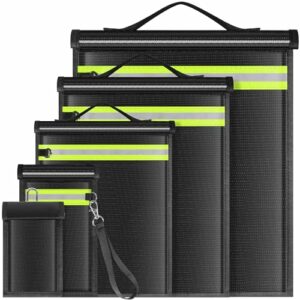

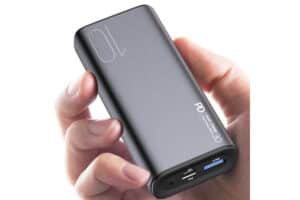







![The Ultimate Beginner's Guide To Buying Your First Laptop [2024] 3 Apple Products](https://theproductreviewdude.com/wp-content/uploads/2024/03/macbook-pro-beside-white-ipad.jpg)


